A beginner’s guide to Ju-On and the Grudge franchise
With a new reboot of The Grudge on the way, we run through the highs and lows of the ghostly J-horror franchise…
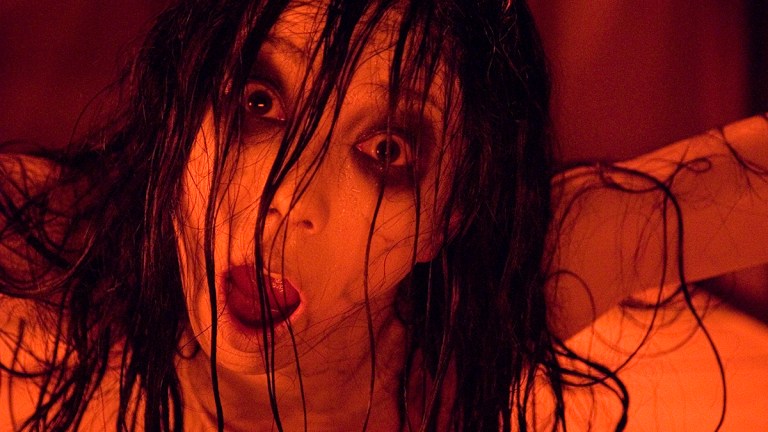
This may be hard to believe, but it’s been nearly 20 years since the international J-Horror boom. Western horror was a barren place back in the late ’90s, with the post-Scream sardonic teen slasher on its deathbed and Saw not even a twinkle in James Wan’s eye.
Meanwhile, in Japan, horror fans were treated to a new breed of ghost story that was humourless and bleak. Complex films made with clinical precision that gave us unforgettable imagery of black-haired, black-eyed soggy dead girls floating down corridors, crawling out of TVs and oozing out of plugholes. Films like Ring, Spiral, Pulse and Dark Water were an icy cold breath of fresh air for genre fans and it wasn’t long before a slew of American remakes started appearing, studios racing to snap up the rights to pretty much anything Japanese and spooky.
Cinematic history repeats itself so it’s no surprise that a new generation of filmmakers are showing their classic J-Horror influence. Creepy, subtle ghost stories are back in fashion. The most enduring of the original franchises – Takashi Shimizu’s Ju-On (The Grudge) – is once again spearheading the trend, with not just an entire Netflix series in the works but a new American “re-imagining” hitting the big screen.
If you’re looking to bone up on the mythos before diving in, you may think it’s a pretty easy task. Just a couple of films, right? Nope. One does not simply walk into Shimizu’s sprawling world. There are 12 full-length feature films to get through (and that’s not even taking into account the short films, the mobile content, the novelisations, the manga and the Wii game)… But is it all essential scare fare? Or should some of it just crawl back up the staircase and stay locked in its room?
Katasumi and 4444444444 (1998)
The two central characters from the Ju-On franchise first appear in these two short films from Takashi Shimizu. At just three minutes each, Katasumi and 4444444444 are a pair of expertly economic ‘screamers’ where innocent teenagers get the fright of their lives, courtesy of a crawling contortionist and a small boy who meows like a cat, both painted head to toe in white.
These shorts were made for a TV anthology of mini-scares called Gakkō no kaidan G and even though Shimizu was fresh out of film school, they made an impact and were the standouts of the collection.
Shimizu claims the inspiration for his ghosts’ uncanny appearance came from the Butoh dance groups he was frightened by as a child. Butoh is a mysterious type of avant-garde theatre from postwar Japan that uses contortion, body paint and expressive, uncanny movements to create intense performances, often relating to taboo subject matter. It’s perhaps Shimizu’s channelling of such a visceral, distinctly Japanese tradition that first resonated with his audience.
Ju-On: The Curse (2000)
Kiyoshi Kurosawa – Shimizu’s mentor at film school and already a notable genre voice due to films like Sweet Home, Cure and Séance – loved the two shorts and helped to secure the budget for their expansion into a straight-to-video feature. V-Cinema had become a genre itself throughout ’90s Japan, with its low-budget made-for-video format allowing directors unprecedented creative freedom.
Ju-On: The Curse finds Shimizu experimenting with the unusual chronology and fragmented storytelling that would define the franchise, introducing us to the backstory of his two ghosts through a series of six linked segments. We are introduced to a house in Tokyo and the horrible event that kicks the story off, as artist Takeo Saeki murders his wife Kayako, son Toshio and cat Mar in a jealous rage. Now, anyone who enters the house becomes cursed and dies at the hands of their vengeful spirits.
The scares from the original shorts are both recycled here but, given the additional context, take on a deeper meaning. Kayako’s rage is eternal and indiscriminate. Unlike many horror antagonists, the curse doesn’t target wrongdoers – it gets literally anyone, good, bad, adult, child, as long as they’ve gone into the house – and this makes it all the more chilling.
Ju-On: The Curse is by no means a perfect film. It’s very slow, there’s a lot of walking around in the dark and the vignettes do feel a little repetitive but it has something – an atmosphere of doom, a crushing inevitability, a deadly seriousness and a fresh visual style that makes it hard to forget once you’ve seen it.
Ju-On: The Curse 2 (2000)
The Curse 2 is a short and curious sequel that was shot back-to-back with The Curse. 29 minutes out of 76 (nearly half the run time) are taken entirely from The Curse, which certainly makes you question the point of making two films. That said, this one re-edits some of those original vignettes and arguably makes them more effective. In particular, the Kobayashi segment (easily the most grotesque and shocking of the entire franchise, focusing on how the curse follows Toshio’s former teacher and his pregnant wife) packs more of a punch for being trimmed down.
The second half of the movie focuses on the poor family who move into the cursed Saeki house and, while this has its fair share of disturbing images, its breezy pacing and more creative scares give it a lightness of touch that wasn’t present in the original film. In particular, the incredible punchline – a literal depiction of the curse’s never-ending nature – is so over-the-top it’s hard to not picture Shimizu laughing to himself as he was shooting it (and, as anyone who’s seen Vampire Girl vs Frankenstein Girl can confirm, he’s not above satirising himself or his films).
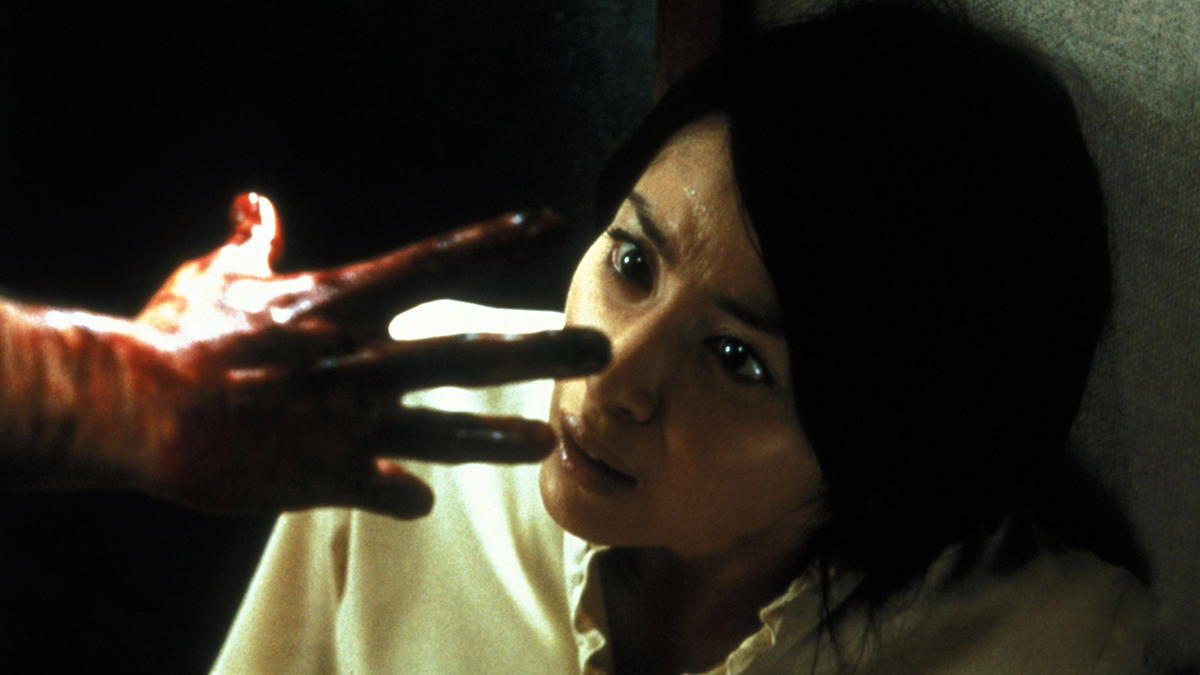
Ju-On: The Grudge (2002)
Both Curse films were very successful in Japan, so Shimizu was asked to bring Kayako and Toshio out of the video world and onto the big screen, which he did with style. If you only watch one Ju-On film, make it this one. The Grudge continues the exact same structure and style as its predecessors without really increasing the scale of anything (the action still takes place in the same house), but it’s a lot slicker looking and just nails the essence of the Saeki curse.
The Grudge has the indefinable cinematic alchemy of a classic. Something just works. The scares here are so sophisticated and brilliant – from the absurd surrealism of Toshio’s elevator ride to the primal terror of Kayako hiding under the bedsheets – and Shimizu shoots them with something almost akin to affection. There are so many iconic moments and you can feel his glee at scaring the audience.
It all builds to the most effective climax in the franchise, the infamous scene in which Kayako descends the staircase. It’s been parodied and imitated so often now you’d think it would lose its power, but it’s still terrifying. Actress Takako Fuji’s physical contortions – very much evoking the spirit of Butoh – are incredible and Shimizu keeps the camera on her for so long, as if daring you to look away. The skin-crawling sound design – Kayako’s lingering death rattle – ramps the terror up to unbearable levels. The fact that this ending offers no hope or even explanation to a lot of the film’s mysteries makes it all the more macabre.
Ju-On: The Grudge 2 (2003)
Hot on The Grudge’s heels was this bizarre sequel that, although keeping with the six-act structure of the series, feels curiously out of place. The over-arching plot is less abstract than usual and focuses on a film crew who enter the Saeki house to investigate all the deaths that have occurred there. This is a very silly thing for them to do in such an obviously, massively haunted house, so it’s maybe the first time you think “Well, they kinda had it coming”, which does lessen the impact when they all start dying.
The deaths here are more imaginative as Shimizu gives Kayako and Toshio almost infinite power to make themselves giant, melt into ceilings, turn themselves into household objects and warp people’s minds and bodies in whatever way they see fit. It’s kind of a shame as the original concept of clicky-limbed ghosts painted like Butoh players was the very definition of simple-but-effective. Many of the scares here are too daft to work, like when a football turns into Toshio’s spinning head or a photocopier starts churning out copies of Kayako’s face, but worst of all is a prolonged sequence where a girl is menaced by a sentient wig that runs along the floor like a tribble.
A generous reading could argue Shimizu was intentionally satirising J-Horror tropes here, as the genre was already speeding towards burnout, but it’s equally possible he just misfired. Either way, Ju-On: The Grudge 2 is one of the franchise’s weakest instalments. There’s also a lot more CGI employed in making Kayako’s movements jerky and unnatural – a crime, considering how good Takako Fuji is at being terrifying all on her own.
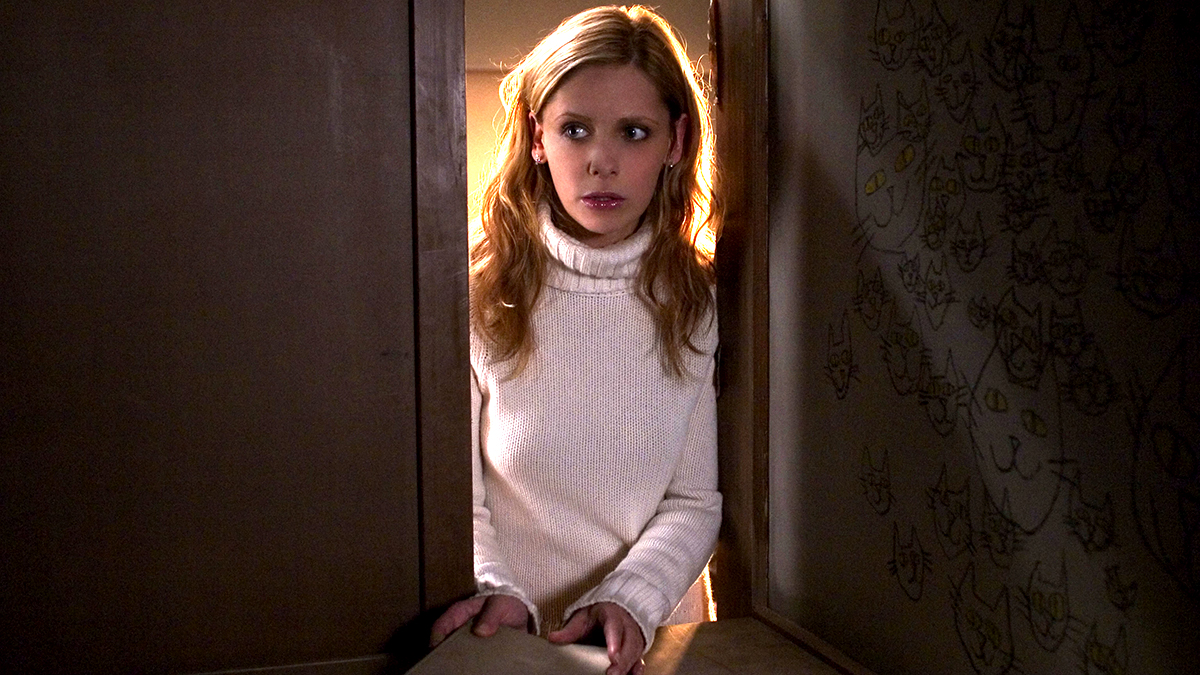
The Grudge (2004)
With the series now becoming something of a worldwide cult phenomenon, the US remake was inevitable. Ring (and, to a lesser extent, Pulse) had already done great numbers, so Sam Raimi and Ghost House produced this English-language reworking of Ju-On: The Grudge without much fear of it failing. To their credit, they brought in Takashi Shimizu to direct and this helped preserve the purity of his vision, making it one of the less blasphemous remakes.
Keeping the location as Tokyo, Shimizu brings westerners into the story via an American family who move into the Saeki house and via Karen Davis (Sarah Michelle Gellar), a student care worker who gets sent there when the family’s elderly matriarch is left alone. This initially mirrors the Rika storyline from the original Ju-On film but is soon wrestled into a more conventional storyline, sacrificing the pervading surrealism of the originals for a straight-ahead ghost story.
In terms of the scares, this is like a Greatest Hits compilation as Shimizu takes all the best moments from the preceding films and recreates them within the new plot. It’s not a bad effort at all but there is a certain magic missing. The originals may be rough around the edges but this suffers a little from its own polish. The decision to retain Takako Fuji as Kayako is a shrewd one as she continues to unsettle, but it’s hard to escape the feeling that this is a diluted version. The death curse, while still scary, has lost some of its malevolence. By making the story more accessible, there’s less of that indescribable nightmarish quality that Ju-On gets so right.
The Grudge 2 (2006)
With The Grudge remake grossing nearly 20 times its budget at the box office, a sequel was greenlit straight away, and Shimizu was back at the controls. Clearly eager to stretch himself a little from the single-mindedness of his previous films, The Grudge 2 is a new and – in its way – daring departure.
The film starts with Karen (Sarah Michelle-Gellar making a slight return) recovering in hospital from the events of The Grudge, when her sister Aubrey (Amber Tamblyn) comes to visit. It’s no surprise to anyone who’s seen a Ju-On film that Karen doesn’t make it far into the story and Aubrey is left to investigate the horrible forces that killed her, leading her to the Saeki house. Before you can say “WILL YOU JUST STOP GOING IN THERE ALREADY?” the death curse has its latest victim.
The action switches from Tokyo to Chicago part-way through the film, which does away with the implication that the house itself is the epicentre of the curse. It’s a bold move, but the subsequent origin story that Shimizu offers for Kayako isn’t the best one (if anything it detracts from the simple white-hot scorn of her curse). However, as many problems as this raises, its more measured approach to storytelling pays off with an excellent twist that opens up interesting new possibilities for the franchise and proves Shimizu isn’t the one-trick pony he may have seemed to be.
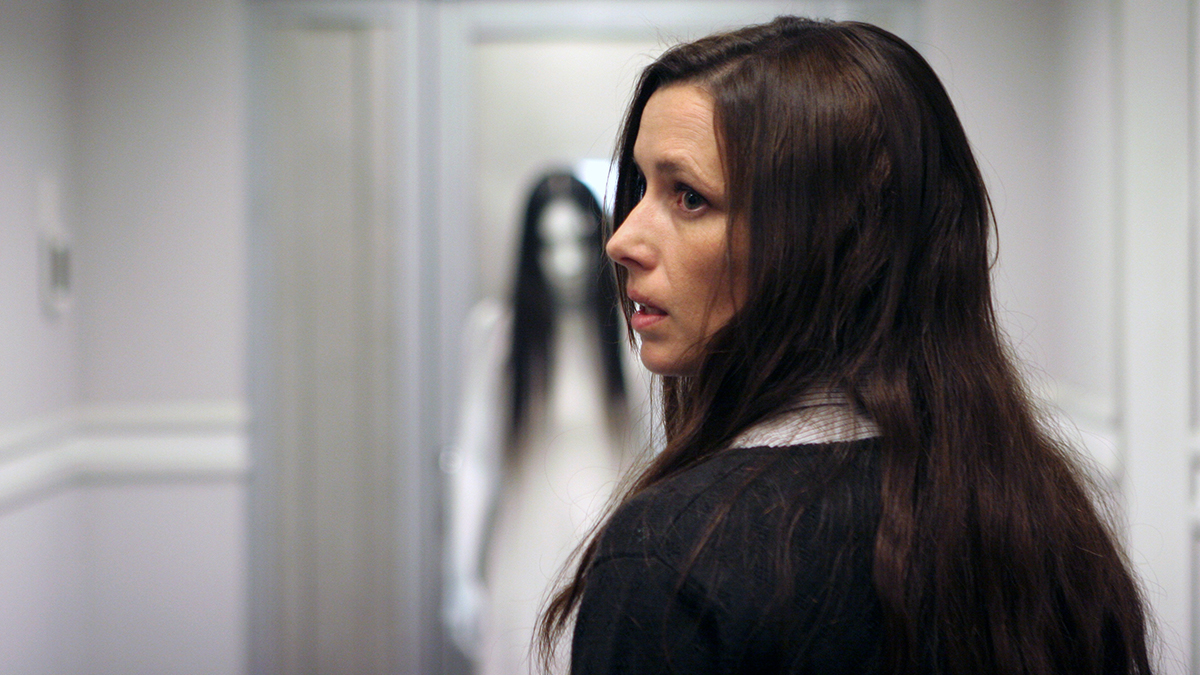
The Grudge 3 (2009)
Sadly, 10 years on from the original shorts, Takashi Shimizu drew a line under things and decided not to return to the franchise for a third American Grudge. Instead, the reins were passed to Toby Wilkins, no stranger to Kayako himself, having directed a series of short mobile films called Tales From The Grudge as promotional material for The Grudge 2.
Unfortunately, with both Shimizu and Takako Fuji not present, The Grudge 3 loses almost all of the franchise’s identity and feels more like plucky fan-fiction than a worthy successor (a particular shame, since Wilkins’ debut feature Splinter is one of the unsung horror classics of the 2000s). Ostensibly set in the same Chicago building that The Grudge 2 ended in, the rules bend beyond recognition in terms of how the death curse is passed along. It’s as contagious as the common cold now, so the whole building soon find themselves tapped on the shoulder by the creepy white hands of screaming ghouls.
If doing away with the episodic structure and telling the story in simple A to B chronology wasn’t enough to upset the purists, we also get – for the first time – a potential solution to stopping the death curse, as Sayoko’s never-before-mentioned sister Naoko (Emi Ikehata) rocks up in Chicago and reckons she can pull off an exorcism. In offering even this possibly futile glimmer of hope, the morbid inevitability that drives the Kayako curse is lost and The Grudge 3 feels like a very basic horror by comparison.
It’s not a disaster. The film is still watchable, with a good cast and a nice visual style, but you’d have to be feeling generous to see it as anything beyond a toothless and derivative diversion.
Ju-On: White Ghost and Ju-On: Black Ghost (2009)
To celebrate 10 years of Ju-On, two almost totally unrelated spin-offs were shot concurrently for a limited Japanese theatrical release. Takashi Shimizu is credited as supervising producer and presumably had some kind of a final sign-off on these before they went out into the wild but White Ghost (directed by Ryuta Miyake) and Black Ghost (directed by Mari Asato) are only loosely tied to the mythos.
On one hand, the idea of there being a Ju-On Expanded Universe is a nice one – a whole world of Butoh-inspired ghosts and their endless curses – but in reality, it’s a tough brief to stretch out such a vague concept any further than it’s already gone.
White Ghost and Black Ghost both adopt Shimizu’s non-linear/episodic story structure and both colour ghosts make the croaking and meowing sounds we’ve come to love but, if anything, this slavish devotion to franchise tropes just makes you wonder what the point of the new ghosts are when they’re pretty much the same as the old ones.
Admittedly, the origin stories are different (Black Ghost is a grisly dead-twin story and White Ghost involves a cursed cassette tape) but Ju-On has always felt like it had more emphasis on the “how” than the “why”. By exploring the latter, you end up with a pair of serviceable but empty ghost stories that, 10 years after the event, feel curiously without a point, let alone a sting.
Toshio’s ghost appears briefly in both films, just to try and create a more explicit tie-in with the others but, honestly, you could skip these without missing a thing about the story.
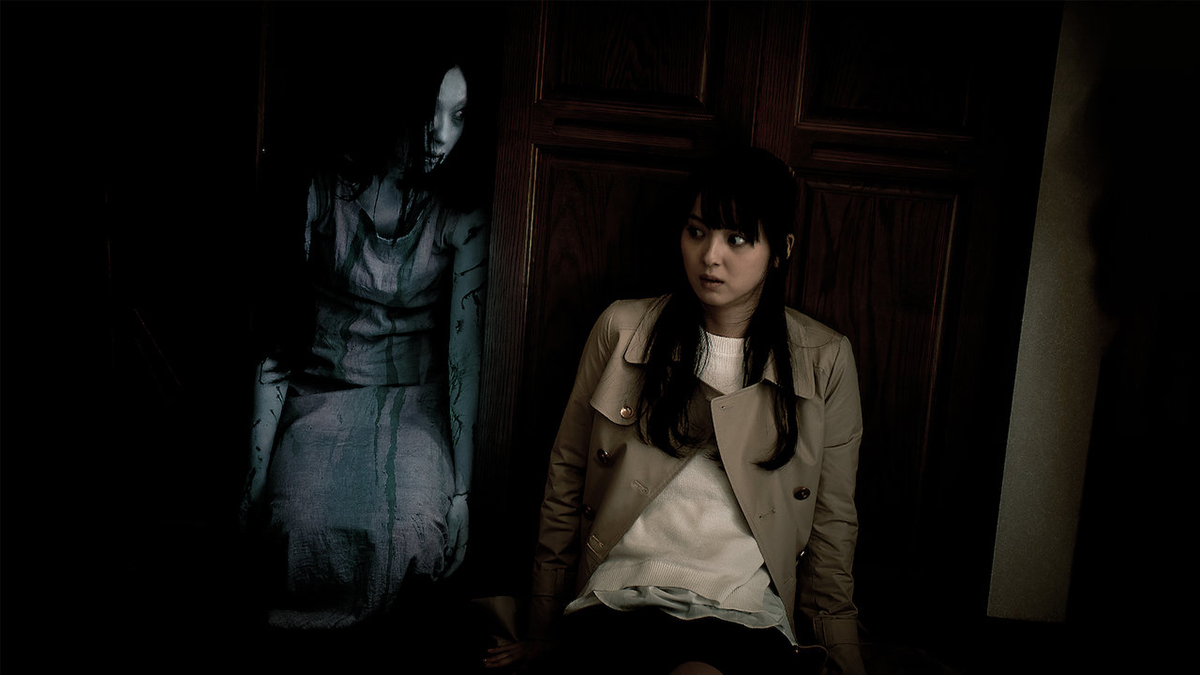
Ju-On: The Beginning of the End (2014)
No one asked for it but Masayuki Ochiai (known for second-tier J-Horror pics like Shutter and Infection) decided to reboot the franchise in 2014 with a pair of films he felt would make a fitting end to the story. Legendary J-Horror producer Takashige Ichise (who produced or co-produced all of the Ju-On films) co-wrote the script and provided some credibility but, unfortunately, not enough. These films don’t just suffer from a lack of Takashi Shimizu but they seem to actively go against the spirit of what he was trying to do.
Returning to the Saeki curse, The Beginning Of The End gives us the familiar six-act structure but goes all the way back in time to when Sayoko was still alive, then flashes forward and unleashes the curse on a good-natured schoolteacher (Nozomi Sasaki). What’s annoying is not only do they try and make Takeo more sympathetic (and he really is the last person in this story who needs your sympathy) but they also hang poor Toshio out to dry on a baffling new origin story that misses the point completely.
The staircase scene in Ju-On: The Grudge is so powerful because it’s loaded with the horror of Kayako’s tragic backstory. In Beginning Of The End, there are ghost cats in the microwave, giant heads on subway trains, Toshio poking out of desk drawers, jaws being ripped off, heads being spun around, etc, but it all feels empty, if not outright comical, without that emotional backbone. About the nicest thing that can be said about this film is that Nozomi Sasaki sports an array of truly delightful cardigans.
Ju-On: The Final Curse (2015)
Masayuki Ochiai and Takashige Ichise brought their retconned mythos back for a second outing that goes further down the rabbit hole, recasting Toshio as an actual devil child who is the centre of the curse, with Kayako his enabler and Takeo somehow now a victim. This turns the entire story inside out and makes very little sense, so the death curse now just kills everyone who even so much as looks at anyone else in a series of loosely connected scenes.
There are some ludicrous scares here too, most of which rely on loud noises and little else, but things get so desperate at one point that a plate of squid ink pasta turns into Kayako’s hair. If it were parody, it would be moderately amusing but, sadly, The Final Curse shows no signs of self-awareness.
It doesn’t even have the conviction its title suggests, as the non-ending reveals the Final Curse is not actually the Final Curse and leaves things open for a further Ochiai/Ichise Ju-On film to be made (thankfully, to date, this hasn’t happened). Shimizu’s entries have their flaws but The Beginning of the End and The Final Curse show how tedious the movies can be without his spark and his genuine weirdness.
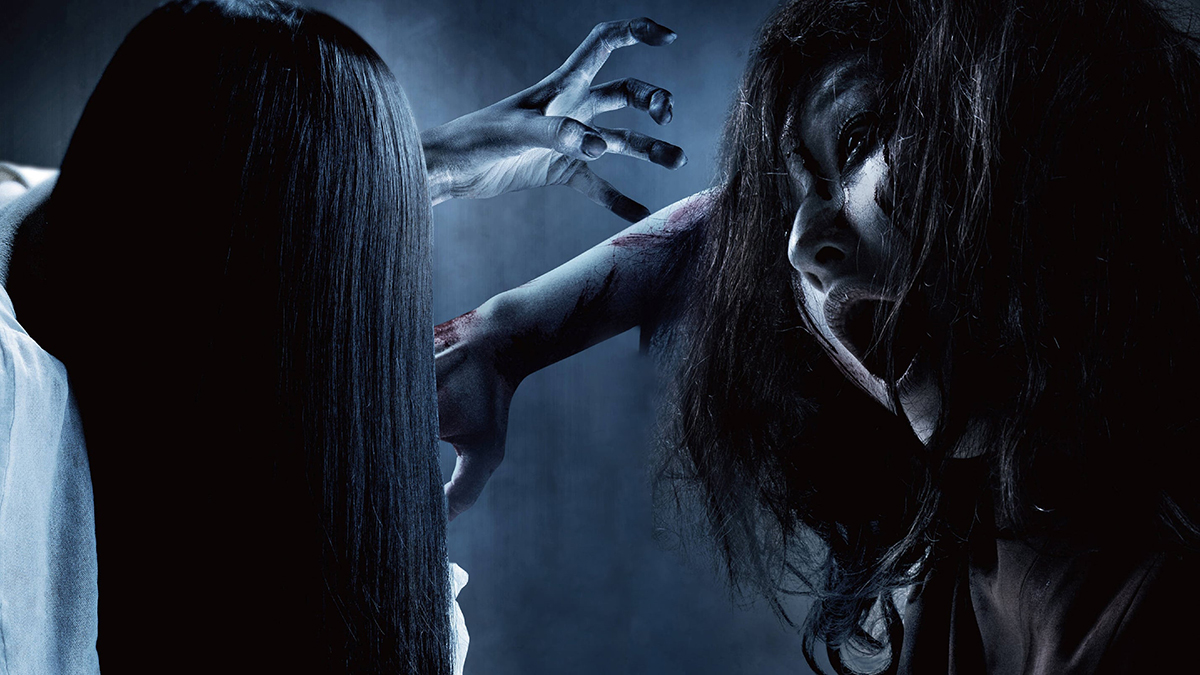
Sadako vs Kayako (2016)
Initially suggested as a joke, this clash of the titans between Ring’s Sadako and Ju-On’s Kayako has no right to be as good as it is. Kōji Shiraishi (the man behind Noroi, one of the more underrated J-Horrors) takes the director’s chair and doubles down on the ridiculousness. It’s the first film in the series that has its tongue in cheek but with its heart in the right place and more legit scares than the last few movies combined, Sadako vs Kayako is a real crowd-pleaser.
There are two strands to the plot. One involves a family moving into an apartment right by the Saeki house. Another involves two schoolgirls buying a VCR and finding it contains Sadako’s infamous cursed tape. As the film unfolds, these two threads tie together and lead to the unlikely but somehow perfectly sensible situation in which the titular ghosts must fight.
The cast is enjoyable, the movie looks super-stylish and, best of all, Sadako and Kayako – even in amongst all this comic-book chaos – have their creepiness back. They turn into the spectral equivalents of kaiju by the end but both of their first appearances in the film gave me goosebumps of residual fear. But, unlike the original Ju-On films, this one’s happy to send you home feeling relatively safe. Especially since there’s a super-catchy theme song at the end to make everything better…
With the release of Sadako vs Kayako, the ghosts’ transition into full mainstream consciousness was complete. The marketing campaign for the film in Japan was hilarious, including a fantastic Instagram account and a tie-in with Hello Kitty. Arguably, most horror icons have the fright taken out of them eventually, from Freddy Krueger’s reinvention as a wisecracking comedian to the Kawaii-Kayako, so it’s probably quite a challenge now to scare audiences with a ghoul after some 20 years of familiarity.
However, much like its own eternal death curse, the Ju-On franchise is showing no sign of stopping any time soon. The 2020 US Grudge has promised straight-faced scares, a strong cast (including John Cho and Andrea Riseborough) and an acclaimed director (Nicolas Pesce – The Eyes Of My Mother). In the meantime, it’s worth revisiting some of Shimizu’s original films to get yourself back in the mood and maybe save Sadako vs Kayako for when you’re scared stiff and need to come back down again…
Happy haunting!